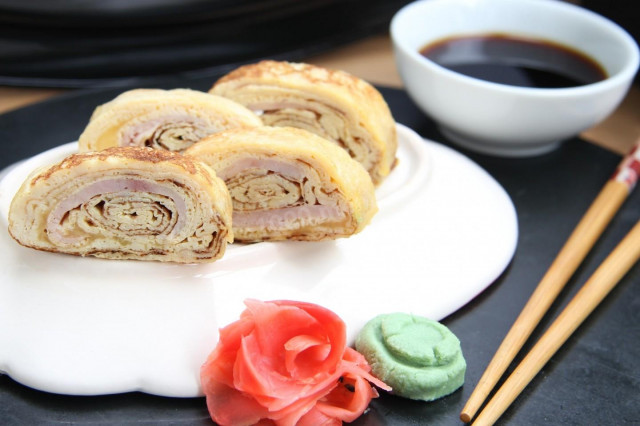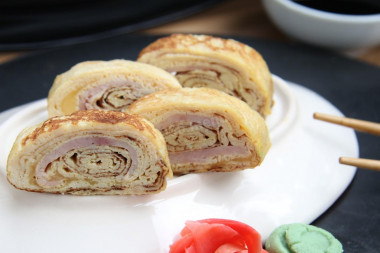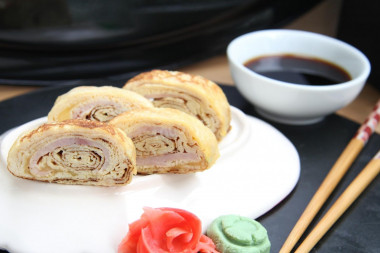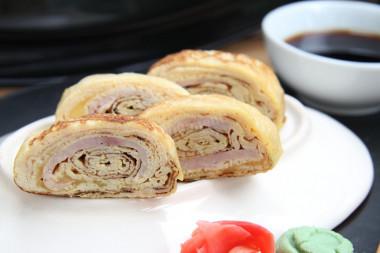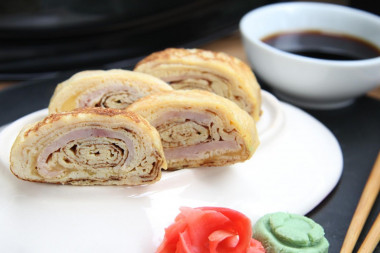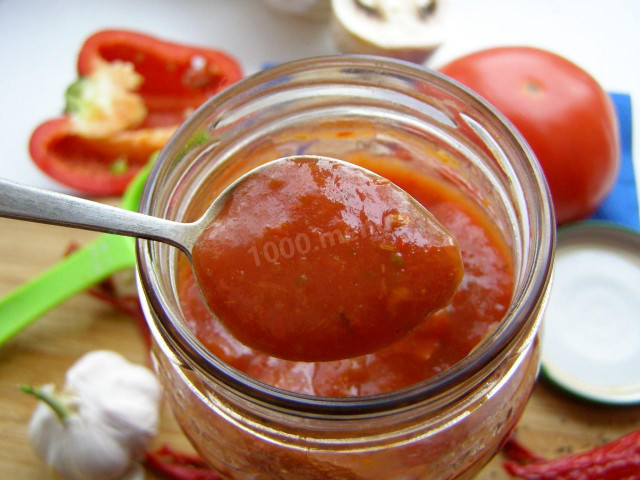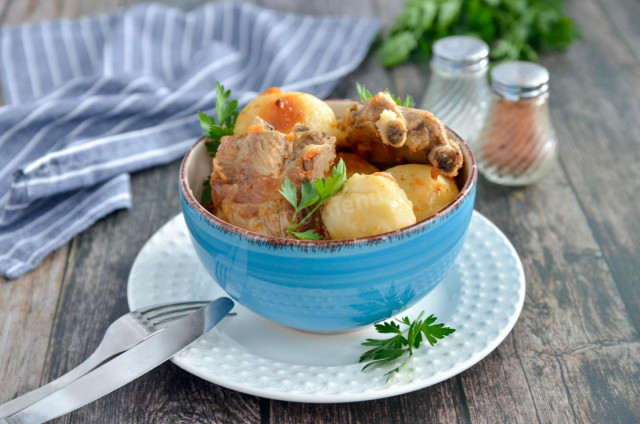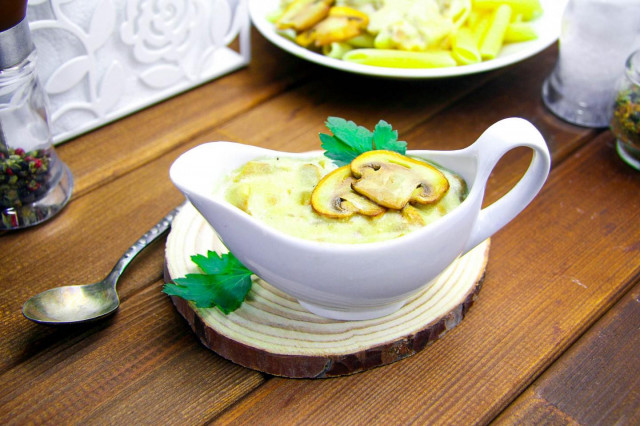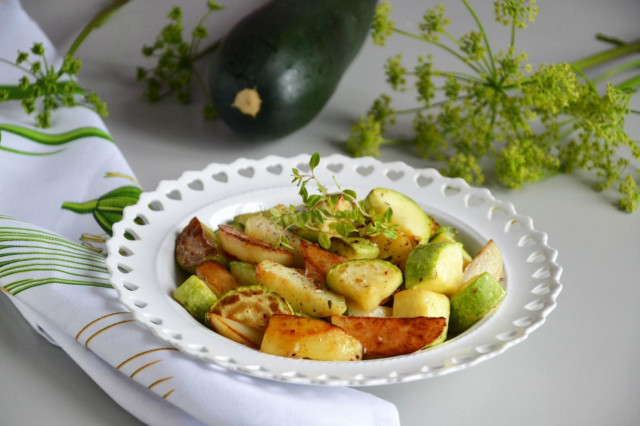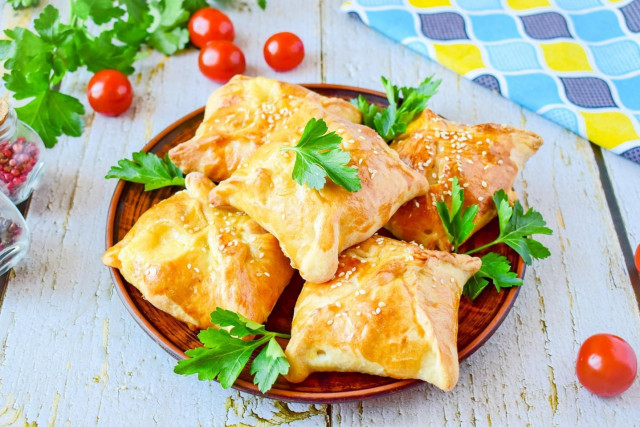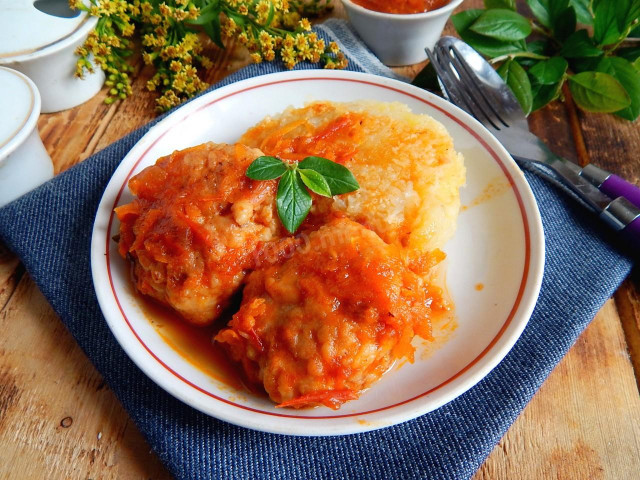Composition / ingredients
Step-by-step cooking
Step 1:
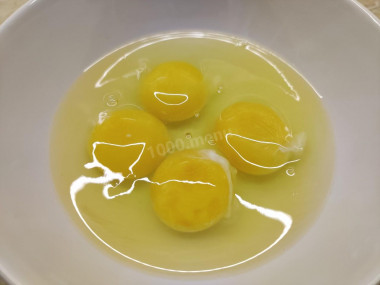
Wash the chicken eggs with warm water and break them into the dishes in which we will work.
Step 2:
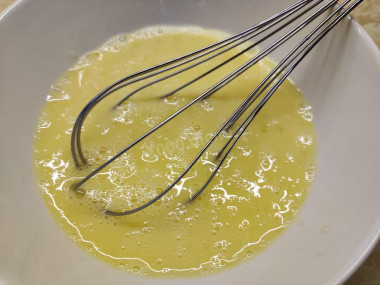
With a whisk or fork, lightly mix the eggs, achieving a more or less uniform consistency. There is no need to whip, in this recipe the bubbles will only be superfluous.
Step 3:
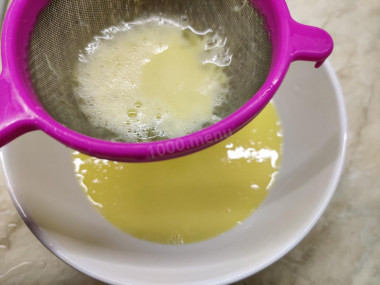
In order to make the egg mixture smoother, pass it through a fine strainer. Thus, the flagella and vesicles will separate from the main mixture. We won't need them.
Step 4:
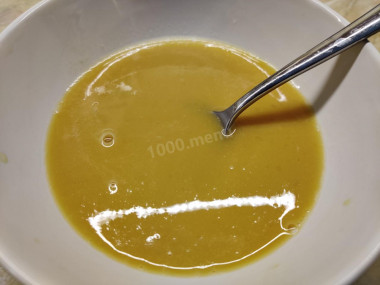
Add rice vinegar, soy sauce and sugar to the resulting homogeneous mixture. Stir the mixture until the sugar grains dissolve.
Step 5:
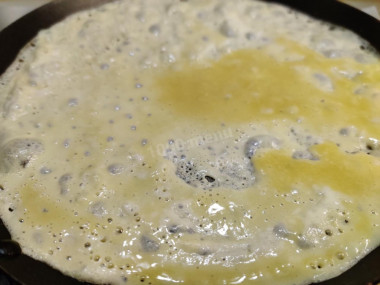
Now heat the pan and add a drop of sunflower oil. I'm going to fry an omelet in a low-sided pancake pan. Pour out the first portion of the egg mixture, distributing it evenly over the entire surface of the pancake. As usual, we do this when frying pancakes. In total, there will be about 4-5 such infusions, that is, 4-5 egg layers.
Step 6:
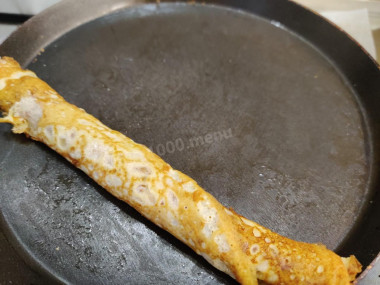
As soon as the first pancake is grasped, we use a cooking spatula (or any other tool convenient to you, a fork, for example) and carefully and quite tightly twist the pancake into a roll, trying not to tear the thin and delicate pancake cloth. We move the roll to the edge of the pan.
Step 7:
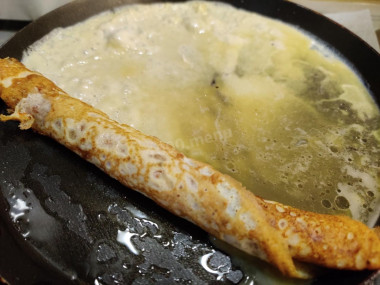
Now, on the part of the frying pan that turned out to be freer, we drop a drop of vegetable oil, if necessary. And pour out the next portion of the egg mixture, distributing it evenly in the same circular motion. The idea is that each next pancake sticks and connects with the previous one, already ready.
Step 8:
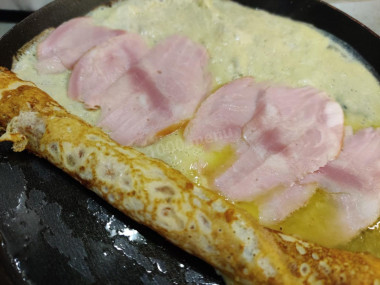
At this stage, I spread thinly-thinly sliced pieces of ham along the future roll. And, as soon as the new pancake has grabbed, I wrap it in a roll again, starting to twist it from the already finished pancake. Try to twist the roll as tightly as possible, in order to avoid the formation of voids in the middle.
Step 9:
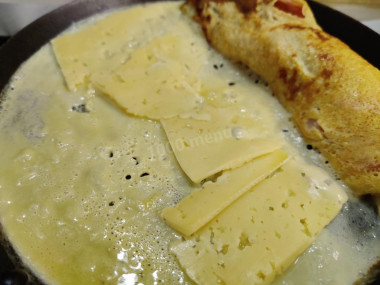
Again lubricate the pan with sunflower oil, if necessary. Let the oil warm up, and pour out the next portion of the egg mixture. Spread thinly sliced cheese on this pancake. Any semi-solid will do. We wrap it up again. Repeat this simple operation until the egg mixture runs out.
Step 10:
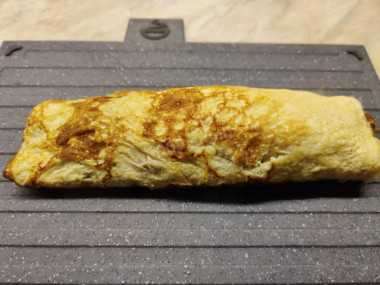
In the end, you should get such a dense egg caterpillar with stuffing. And while the omelet is still hot, it can be given any shape. This is done with the help of a bamboo makisa mat. We wrap the makisa with cling film and, tightly pressing the omelet with our hands, we give it the necessary shape.
Caloric content of the products possible in the composition of the dish
- Dutch cheese - 352 kcal/100g
- Swiss cheese - 335 kcal/100g
- Russian cheese - 366 kcal/100g
- Kostroma cheese - 345 kcal/100g
- Yaroslavsky cheese - 361 kcal/100g
- Altai cheese 50% fat content - 356 kcal/100g
- Soviet cheese - 400 kcal/100g
- Cheese "steppe" - 362 kcal/100g
- Uglich cheese - 347 kcal/100g
- Poshekhonsky cheese - 350 kcal/100g
- Lambert cheese - 377 kcal/100g
- Appnzeller cheese with 50% fat content - 400 kcal/100g
- Chester cheese with 50% fat content - 363 kcal/100g
- Edamer cheese with 40% fat content - 340 kcal/100g
- Cheese with mushrooms of 50% fat content - 395 kcal/100g
- Emmental cheese with 45% fat content - 420 kcal/100g
- Gouda cheese with 45% fat content - 356 kcal/100g
- Aiadeus cheese - 364 kcal/100g
- Dom blanc cheese (semi-hard) - 360 kcal/100g
- Lo spalmino cheese - 61 kcal/100g
- Cheese "etorki" (sheep, hard) - 401 kcal/100g
- White cheese - 100 kcal/100g
- Fat yellow cheese - 260 kcal/100g
- Altai cheese - 355 kcal/100g
- Kaunas cheese - 355 kcal/100g
- Latvian cheese - 316 kcal/100g
- Limburger cheese - 327 kcal/100g
- Lithuanian cheese - 250 kcal/100g
- Lake cheese - 350 kcal/100g
- Gruyere cheese - 396 kcal/100g
- Soy sauce - 51 kcal/100g
- Granulated sugar - 398 kcal/100g
- Sugar - 398 kcal/100g
- Ham - 270 kcal/100g
- Beef ham - 133 kcal/100g
- Boiled ham - 282 kcal/100g
- Raw ham - 270 kcal/100g
- Ham sausage - 242 kcal/100g
- Vegetable oil - 873 kcal/100g
- Chicken egg - 80 kcal/100g
- Rice vinegar - 20 kcal/100g

